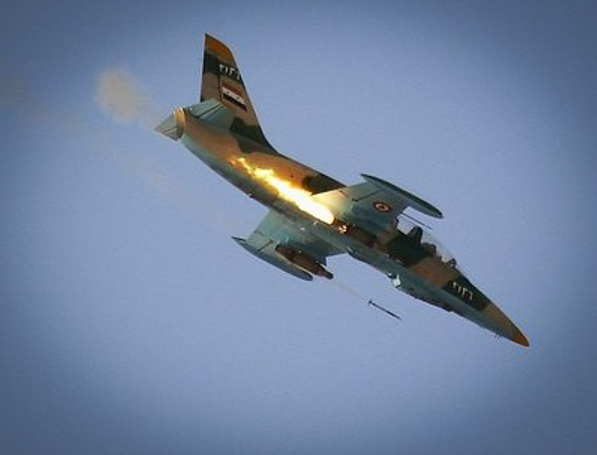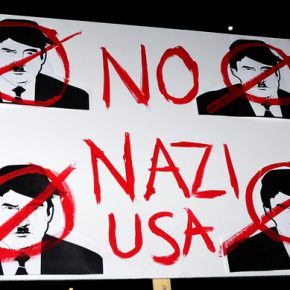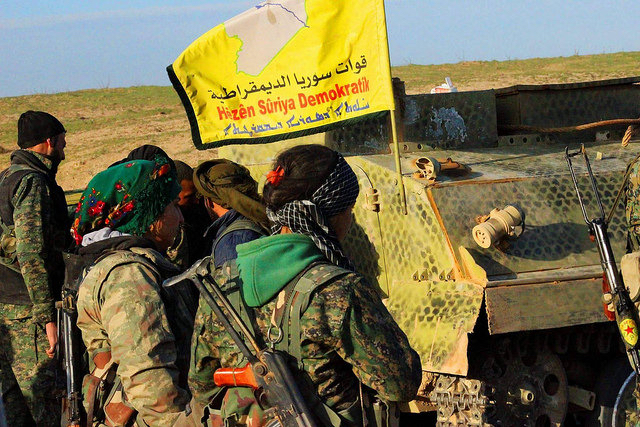Russia, Turkey and Iran agreed to enforce a nationwide truce in Syria, in the hopes of paving the way for a future political solution to the crisis, but both the Syrian government and opposition have their doubts about the truce.
BEIRUT – After six years of failed negotiations to halt the fighting in Syria, a fresh set of peace talks began on Monday in the Kazakh capital of Astana, aimed at solidifying the shaky nationwide cease-fire that came into effect last month. By Tuesday, talks had ended with Iran, Russia and Turkey agreeing on a mechanism to enforce the truce.
A political solution was not on the table in Astana, but securing a lasting country-wide truce is a necessary first step ahead of political negotiations at next month’s U.N.-backed talks in Geneva. After six years of war that have left an estimated 470,000 people dead and 11 million people displaced from their homes, a solution should be a top priority for all those involved. But maintaining the cease-fire long enough for political discussions to begin will be no easy task. The war becomes more complex by the day, as foreign powers with competing interests throw their support behind various factions and players on the ground.
Under the terms of the trilateral deal aimed at “minimizing violence, building confidence, ensuring humanitarian access, protection and free movement of civilians,” Russia and Iran, who support the Syrian government, and Turkey, who supports the opposition, will act together to monitor and enforce the cease-fire, according to a final statement read by Kazakh foreign minister Kairat Abdrakhmanov.
The three nations agreed that the armed opposition groups should participate in the upcoming Geneva talks. In the past, only the Saudi-backed High Negotiations Committee (HNC) took part in negotiations. The agreement also reiterated Iran, Turkey and Russia’s determination to target former al-Qaida affiliate Jabhat Fatah al-Sham and the so-called Islamic State group and urged opposition groups to cut ties with them.
The statement gave little indication of how the cease-fire would be maintained and monitored or what measures would be taken to ensure that rebel groups were separated from ISIS and al-Qaida.
“The first test is the cease-fire,” Yezid Sayigh, a senior fellow at the Carnegie Middle East Center, told Syria Deeply. “If [Russia] succeeds it puts them in a position to start building up political consultations for the next phase, which could take months, of getting a dialogue going toward an ultimate political deal.”
The Opposition’s Stance
Russia has already begun to make important moves toward political discussions. Most notably, Moscow’s improved relationship with Turkey led to a shift in Ankara’s hard-line stance on the removal of Assad. With Turkey onboard, Russia is in theory better placed for discussions with the Syrian opposition.
The Astana talks were the first to include Syrian armed opposition factions, giving them a higher chance of success. Among the rebel groups in the delegations were Jaish al-Islam, Failaq al-Sham, Fastaqim, the Sultan Murad Division, Jabhat Shamiyya and Suqoor al-Sham. Russia also agreed to include the major rebel faction Ahrar al-Sham. They refused to attend, but the invitation highlights Moscow’s understanding that they are a “powerful element on the ground that can allow or block the further political steps that Russia seeks,” Sayigh said.
It is still unclear if the Syrian opposition will adhere to the Astana deal, but the delegation has not endorsed the document. The terms of the deal are not yet clear, but, so far, the opposition’s many demands have not been met, which could threaten the truce. Speaking to AFP, rebel spokesman Osama Abu Zeid warned that “if [negotiations] don’t succeed, unfortunately we’ll have no choice but to continue fighting.”
The Syrian opposition made its stance clear going into the peace talks. Rebels demanded relief for “the suffering of Syrians under siege,” and a discussion on the release of thousands of people currently arbitrarily detained in government prisons and the unobstructed delivery of aid, Yahya al-Aridi, an opposition spokesman, told Reuters. If these issues were not addressed, the opposition said it would not enter into any political negotiations.
Some opposition delegates, such as Jaish al-Islam member Mohammed Alloush, also called for the many Iran-backed militias who fight with the Syrian government to leave the country, accusing them of being an obstacle to achieving peace. Turkish foreign minister Mevlut Cavusoglu echoed this call just after the cease-fire was announced, saying, “All foreign fighters need to leave Syria. Hezbollah needs to return to Lebanon.”
Though Iran was hesitant about the Astana talks, Tehran’s inclusion in the deal indicates that it will not be pulling out of Syria soon. Rebels criticized Iran’s inclusion in the new agreement, accusing Tehran of “spearheading in a number of areas military offensives and leading to forcible displacements of thousands of Syrians and causing bloodletting. This communique legitimizes this role,” an opposition delegate, who declined to be identified, told Reuters.
Iran has trained thousands of fighters from Iran, Iraq, Lebanon and elsewhere who have then been deployed to support Assad’s forces in Syria. In addition, Iran has trained and funded thousands of local pro-government fighters and militias, many of them operating under the command of the Iranian Revolutionary Guard Corps (IRGC) and Hezbollah.
Iran and Russia’s Competing Interests
Though both Russia and Iran have provided much-needed support to Assad, they have different endgames in Syria. In the week leading up to the talks, Russia and Syria signed an agreement to expand Russia’s naval base in Tartous that would allow for 11 warships at a time. Securing its bases in Syria has been a priority for Russia, and with that taken care of, finding a political solution is in Moscow’s best interest. “In order to come away with whatever gains [Russian president Vladimir] Putin has been seeking in this crisis, he needs to show that he can come up with some political deal,” Sayigh said. “Also so that Russia is able to bring its military intervention to an end because it doesn’t want this to be endless.”
Tehran has different plans for Syria. “Iran and its proxies prefer a military solution that yields faster demographic changes, with the aim of consolidating the ‘Shiite crescent’ they have been working on for decades,”according to the Washington Institute.
Their diverging interests were clear last month, when Iran opposed Turkey and Russia’s first deal to evacuated rebels from eastern Aleppo. The deal went through only after Iran’s demands to secure the evacuation of two besieged Shiite towns in Idlib were met. Despite the cease-fire that followed the Aleppo deal, Hezbollah and pro-government forces were accused of fighting rebels in the Damascus suburbs, with particularly heavy clashes in the water-rich area of Wadi Barada.
Iran and Syria’s violations of the initial cease-fire call into question their willingness to commit to the Astana agreement, especially as they work to secure Assad’s position around Damascus, which will make any political negotiations more difficult. The government delegation in Syria said that despite Russia’s recognition of the armed opposition, it still considered them terrorists.
Even if the cease-fire does hold, Russia must now provide parameters for political transition that Syria and Iran will accept. At this point, Syria is not bound to comply with Moscow’s proposal because it can still rely on Iran’s support.
“The regime is fundamentally unable and unwilling to do what Russia expects and needs,” Sayigh said. “It’s likely that the Russians don’t have that kind of leverage and the whole process will regress again. We’re faced with the strong possibility that whatever cease-fire happens can’t be consolidated because it can’t be extended into a political agreement.”
This article originally appeared on Syria Deeply, and you can find the original here. For important news about the war in Syria, you can sign up to the Syria Deeply email list. Photograph courtesy of a.anis. Published under a Creative Commons license.





